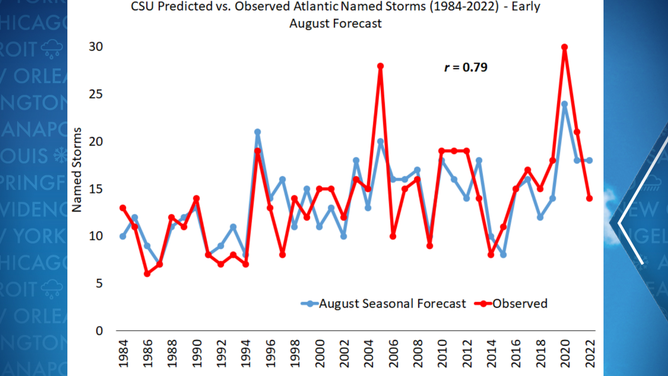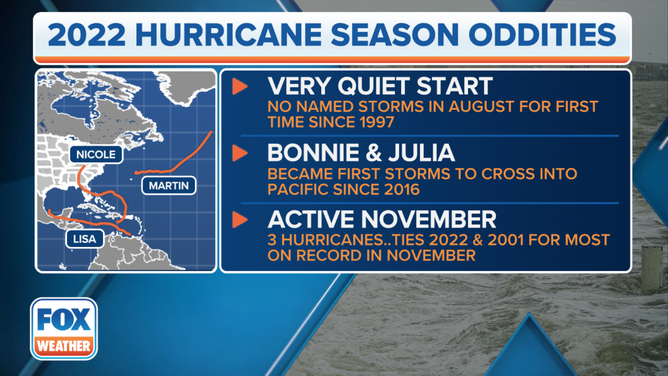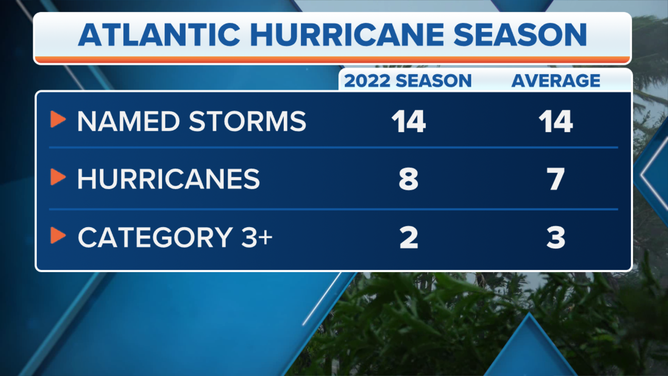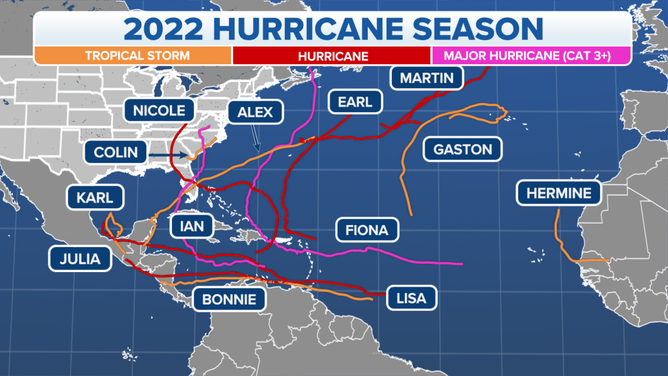Hurricane season 2022 ends with tropical activity below expectations
Outlooks from Colorado State University, National Oceanic and Atmospheric Administration and others called for a busier-than-average year, continuing a stretch of hyperactivity unseen in modern times, but the near-average season is different from what forecasters had in mind.
Looking back at the 2022 Atlantic hurricane season
FOX Weather Hurricane Specialist Bryan Norcross takes a look back a "strange" hurricane season and the lessons learned, including what happens early in the season has nothing to do with what's going to happen in September and October.
The 2022 Atlantic hurricane season is in the history books, but the near-average season is different from what forecasters had in mind during the run-up to what was expected to be a rather busy cycle.
Outlooks from Colorado State University, National Oceanic and Atmospheric Administration and others called for a busier-than-average year, continuing a stretch of hyperactivity unseen in modern times.
The season ended with 14 named storms, eight hurricanes and only two major cyclones that reached least Category 3 status.
Phil Klotzbach, senior research scientist at CSU’s Department of Atmospheric Sciences, was the lead author of the university’s hurricane outlook and said the skill errors were caused by one month- August.

Colorado State University accuracy of tropical season predictions
(Colorado State University / FOX Weather)
"When looking at monthly ACE in 2022 compared with normal, the biggest surprise of the season was the lack of any named storm activity during August. June had near average activity, July was quiet, August had no activity, September was above the long-term average, and October was relatively quiet," Klotzbach stated in a recent summary discussion.
The Atlantic’s lack of storm activity between July 3 and August 31 was the first time since World War II that there was nothing to track in the basin.
"It was a very strange hurricane season, and there were a lot of lessons out of hurricane season 2022, including what happens in June and July has nothing to do with what’s going to happen in September and October," said FOX Weather hurricane specialist Bryan Norcross.
HURRICANE SEASON 2022 COMES TO AN END. TAKE A LOOK AT THE SCARS LEFT BEHIND

2022 Hurricane Season Oddities
(FOX Weather)
So what happened in August? Several impeding factors that tropical weather experts said will take additional time to analyze.
A CSU season summary pointed to cool sea surface temperatures, an increase in vertical wind shear and dry mid-level air for playing a role in the non-existent tropical season in August.
Typically, during the summer month, four named storms form, and two strengthen into hurricanes, which would have significantly increased 2022’s tally if formation occurred.
These hindering effects relaxed in September, making for a busy period after Labor Day, with half a dozen named storms during the month.
Hurricanes such as Fiona, Ian and Nicole all happened after what is considered to be the statistical peak of the season.

2022 Hurricane Season Summary
(FOX Weather)
HURRICANE IAN BY THE NUMBERS: THE SCOPE OF THE CATASTROPHIC DAMAGE
Many residents in the Sunshine State learned it doesn’t matter when the systems form, it only takes one to cause problems.
Conditions were ripe in the Gulf of Mexico for Hurricane Ian to reach Category 4 intensity before making landfall in Southwest Florida.

The landfall locations of each named storm that struck the U.S. during the 2022 Atlantic hurricane season.
(FOX Weather)
"The bottom line is, if the National Hurricane Center warns you, that means there is danger, and that means you’re putting yourself and your family at risk if you don’t take action. That’s the big lesson of hurricane season 2022," said Norcross.
The 2023 tropical cyclone season in the Atlantic basin will kick off on June 1, with the first outlook expected to be released in April.

2022 Hurricane Season Tracks
(FOX Weather)
